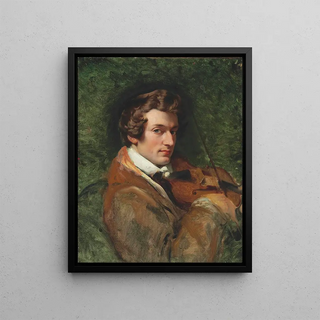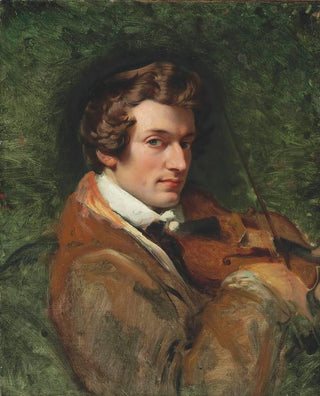Art print | Portrait of Charles Auguste de Briot - Horace Vernet


View from behind

Frame (optional)
In the fascinating world of art, some works transcend the simple frame of the canvas to become living witnesses of an era. The "Portrait of Charles Auguste de Briot" by Horace Vernet falls into this category. This painting, which captures the essence of a man and a period, invites us to delve into the 19th century, a time rich in upheavals and innovations. Through this portrait, Vernet does not merely depict his subject; he offers us a window into a complex personality, a man whose impact on his time deserves exploration.
Style and uniqueness of the work
Vernet's work stands out for its realistic approach and ability to capture the soul of his subjects. In this portrait, light plays a crucial role, illuminating Charles Auguste de Briot's face with a gentleness that evokes a certain nobility. The meticulously detailed elements, from the folds of the jacket to subtle expressions, testify to exceptional craftsmanship. Vernet manages to create an intimate atmosphere, almost tangible, where the viewer's gaze is captivated by the intensity of Briot's look. The composition, balanced and harmonious, emphasizes not only the stature of his subject but also the importance of the relationship between the artist and his model. This painting is much more than a simple portrait; it is a visual statement on identity and social status within the society of its time.
The artist and his influence
Horace Vernet, an emblematic figure of the 19th century, is recognized for his ability to capture military life and battle scenes with remarkable precision. His talent, however, is not limited to these themes; he also excels in portraiture, as demonstrated by this work. Vernet successfully blended tradition and modernity, incorporating elements of Romanticism while remaining faithful to rigorous realism. His influence on his contemporaries and subsequent generations is undeniable. As an artist, he paved the way for a new way of seeing and representing subjects, encouraging a more personal and introspective approach. The "Portrait of Charles Auguste de Briot" perfectly illustrates this vision, making Vernet a pioneer in

Matte finish

View from behind

Frame (optional)
In the fascinating world of art, some works transcend the simple frame of the canvas to become living witnesses of an era. The "Portrait of Charles Auguste de Briot" by Horace Vernet falls into this category. This painting, which captures the essence of a man and a period, invites us to delve into the 19th century, a time rich in upheavals and innovations. Through this portrait, Vernet does not merely depict his subject; he offers us a window into a complex personality, a man whose impact on his time deserves exploration.
Style and uniqueness of the work
Vernet's work stands out for its realistic approach and ability to capture the soul of his subjects. In this portrait, light plays a crucial role, illuminating Charles Auguste de Briot's face with a gentleness that evokes a certain nobility. The meticulously detailed elements, from the folds of the jacket to subtle expressions, testify to exceptional craftsmanship. Vernet manages to create an intimate atmosphere, almost tangible, where the viewer's gaze is captivated by the intensity of Briot's look. The composition, balanced and harmonious, emphasizes not only the stature of his subject but also the importance of the relationship between the artist and his model. This painting is much more than a simple portrait; it is a visual statement on identity and social status within the society of its time.
The artist and his influence
Horace Vernet, an emblematic figure of the 19th century, is recognized for his ability to capture military life and battle scenes with remarkable precision. His talent, however, is not limited to these themes; he also excels in portraiture, as demonstrated by this work. Vernet successfully blended tradition and modernity, incorporating elements of Romanticism while remaining faithful to rigorous realism. His influence on his contemporaries and subsequent generations is undeniable. As an artist, he paved the way for a new way of seeing and representing subjects, encouraging a more personal and introspective approach. The "Portrait of Charles Auguste de Briot" perfectly illustrates this vision, making Vernet a pioneer in






